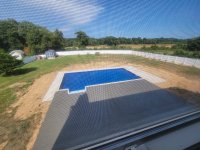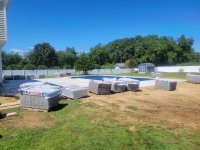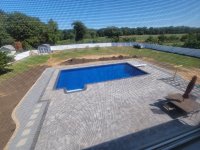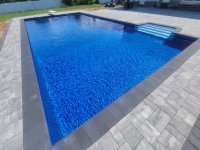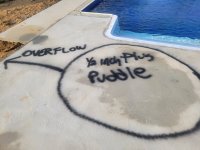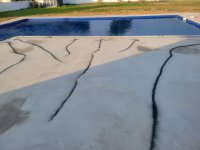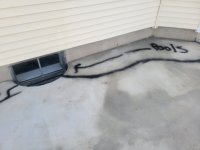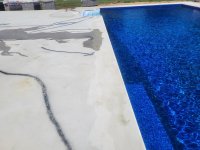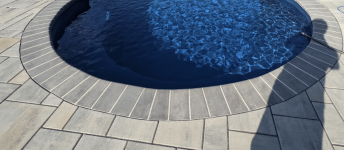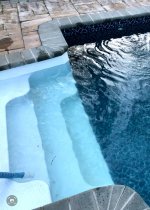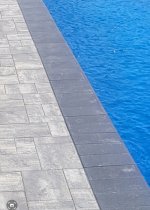Planning to place Cambridge pavers for vinyl pool. Got 2 different quotes.
Contractor #1
-Will wait a month after back fill. Then dig out around the pool and place fabric compact while adding crushed stone for pool patio.
Contractor #2 (10% more than contractor #1)
-will start immediately after pool is backfilled and will do 2-3 inch concrete base with rebar around the pool patio on which pavers will rest. For the walkways he will do crushed stone as base.
Not sure who to pick. My only concern with #2 is if I ever need to get under the patio to fix the pipes or some pool issue removing the concrete would be difficult. They both had 10+ years in industry with good reviews
Contractor #1
-Will wait a month after back fill. Then dig out around the pool and place fabric compact while adding crushed stone for pool patio.
Contractor #2 (10% more than contractor #1)
-will start immediately after pool is backfilled and will do 2-3 inch concrete base with rebar around the pool patio on which pavers will rest. For the walkways he will do crushed stone as base.
Not sure who to pick. My only concern with #2 is if I ever need to get under the patio to fix the pipes or some pool issue removing the concrete would be difficult. They both had 10+ years in industry with good reviews


